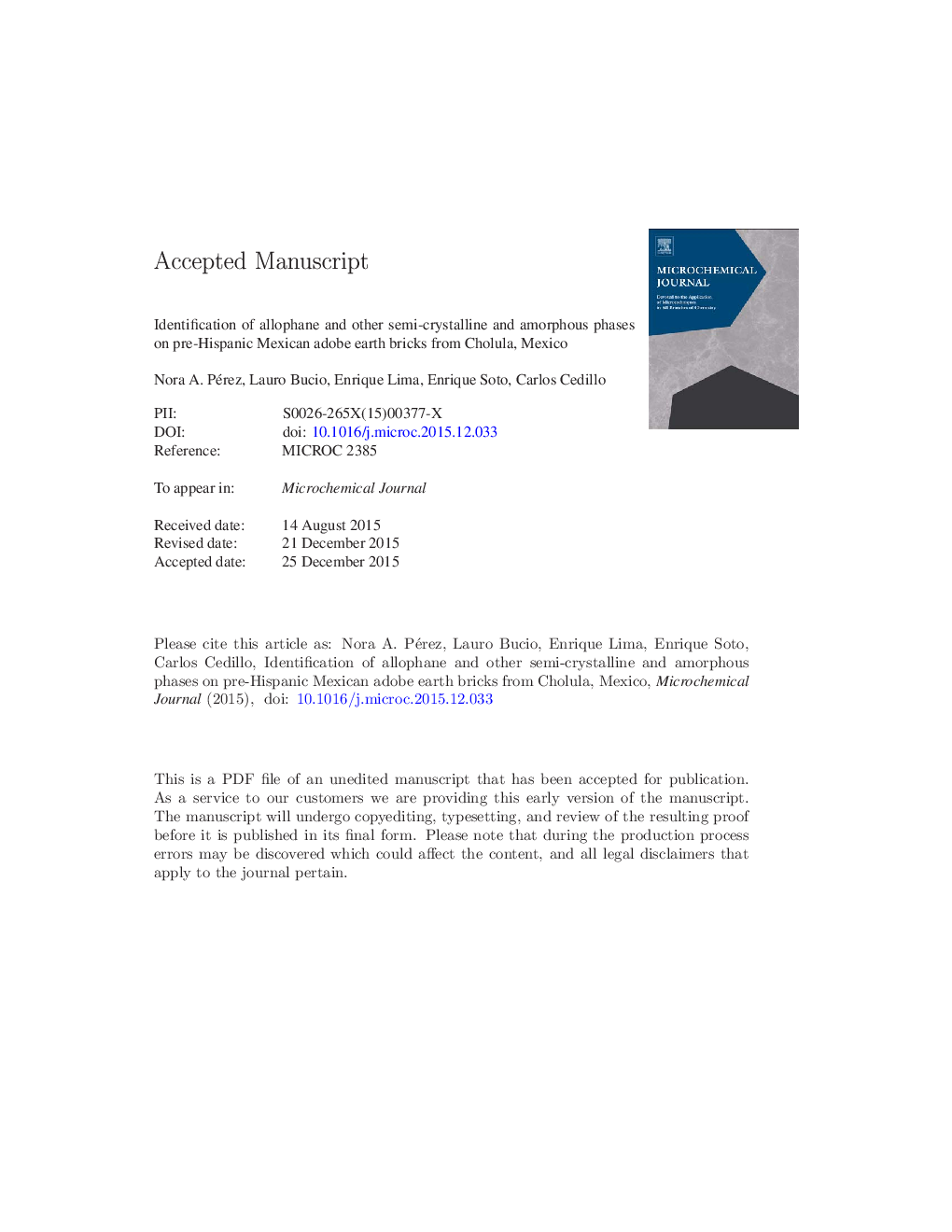| Article ID | Journal | Published Year | Pages | File Type |
|---|---|---|---|---|
| 7641654 | Microchemical Journal | 2016 | 26 Pages |
Abstract
A critical step in designing conservation strategies for earth architecture is the adequate identification of all mineral constituents into a given piece. Of particular importance is the accurate identification of amorphous components, which is normally achieved by well-proved and standardized procedures. However, a lot of difficulties often appear mainly by the severe restrictions imposed when samples involved with cultural heritage are concerned. This allows us to follow a methodology for identifying with accuracy allophane and other amorphous materials as components in micro-samples of archeological adobe earth bricks from Cholula, which is described here. These short-range-order components are relevant because of the properties that they give to the adobe earth bricks as structural material. A set of multi-spectroscopic analysis including both long-range (XRD) and short-range order techniques (FTIR and 29Si and 27Al MAS-NMR); as well as thermal analyses (TGA-DSC); combined with optical microscopy and electron microscopy (SEM and FE-SEM); allowed us to the identification of not only allophane but also other semi-crystalline and amorphous phases like opal-CT, diatoms and volcanic glass.
Related Topics
Physical Sciences and Engineering
Chemistry
Analytical Chemistry
Authors
Nora A. Pérez, Lauro Bucio, Enrique Lima, Enrique Soto, Carlos Cedillo,
